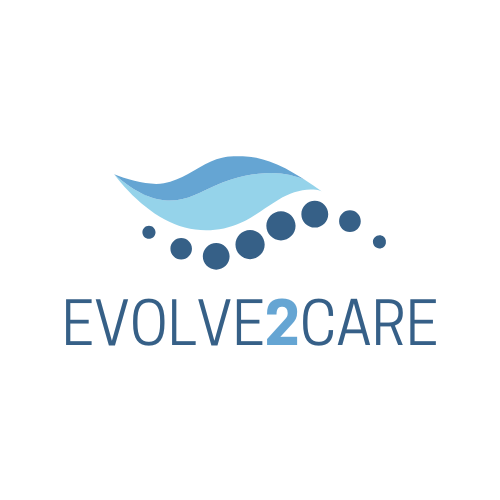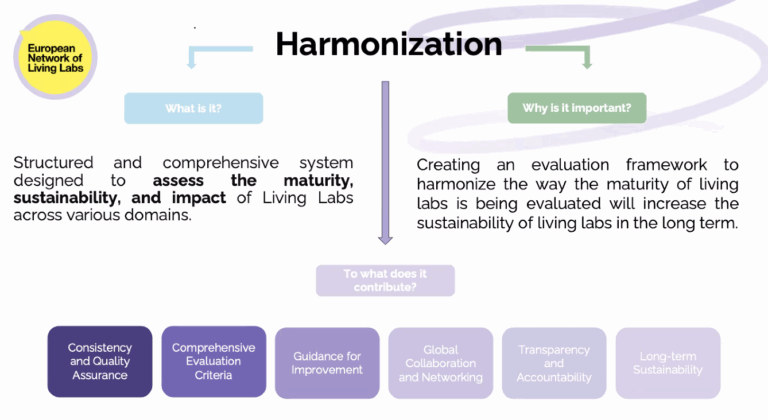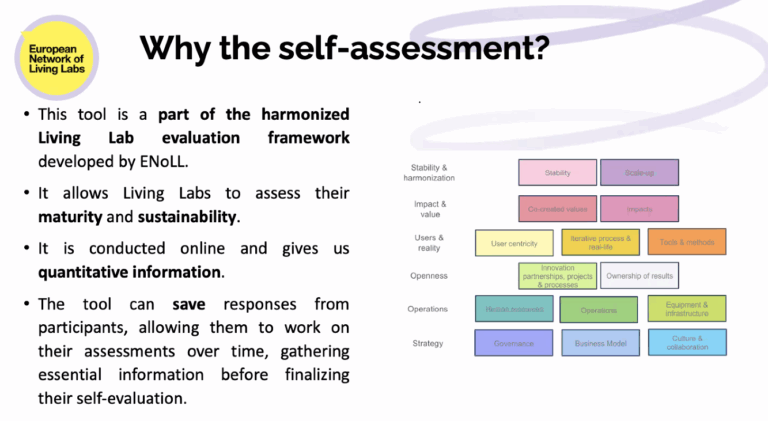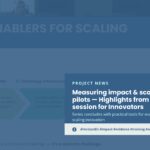
On September 10, 2025, the EVOLVE2CARE Training Series for Living Labs continued with its fifth session, focusing on one of the most defining aspects of Living Labs: certification and standardization. Delivered by Gabriella Quaranta and Alessandra Tricarico of the European Network of Living Labs (ENoLL), the session unpacked not only the why of certification, but also the how—from evaluation frameworks and tools, to good practices and lessons learned.
Why certification matters
As Gabriella Quaranta explained, ENoLL certification for Living Labs is widely regarded as a global standard for user-driven innovation, reflecting a structural and methodological assessment of their maturity as an innovation ecosystem.
Harmonization: What is it?
A central theme of the session was harmonization. Gabriella Quaranta highlighted that ENoLL has developed a structured and comprehensive system to assess the maturity, sustainability, and impact of Living Labs. By harmonizing evaluations, ENoLL ensures consistency and quality assurance, while also providing guidance for improvement, enabling global collaboration, transparency, and accountability, and strengthening long-term sustainability.
This harmonized evaluation framework is built around six evaluation chapters, covering:
- Strategy: Examines macro-level issues such as multi-stakeholder participation, the orchestration role of the Living Lab, collaboration strategies, and its overall business model.
- Users & reality: Looks at collaboration with users, levels of engagement, and participation, with emphasis on iterative processes in real-life contexts and the correct use of tools and methods.
- Operations: Evaluates how a Living Lab manages its operations, including infrastructure, equipment, and human resources.
- Openness: Reviews the openness of processes, partnerships, and projects, as well as practices for feedback and intellectual property protection.
- Value & Impact: Focuses on the development of co-created values and the identification of impact clusters generated by the Living Lab for its stakeholders.
- Stability & Scale-up: Assesses financial and organizational stability, long-term sustainability, and the replication of strategies and practices across ecosystems.
Together, these chapters translate into 15 evaluation criteria, forming the backbone of certification.
Tools for Evaluation: Self-assessment and qualitative application
Certification is supported by two complementary tools, as Alessandra Tricarico pointed:
Self-Assessment Tool: A quantitative instrument that allows Livin Labs to assess their maturity and sustainability and following that gives them a customized evaluation report.
Qualitative Application Form: A narrative-based tool where applicants describe governance structures, business plans, internal and external communication, human resources, projects, available equipment and infrastructure, innovation partnerships and processes, and ownership of results. It is limited to 20 pages (plus annexes) and allows supplementary materials. Here, evaluators look not only at facts but also at the story of the Living Lab’s vision and practice.
By combining these two, certification captures both hard data and contextual insights, ensuring fairness, depth, and comparability.
Tips & good practices
To help applicants succeed, the speakers shared practical advice drawn from years of experience evaluating Living Labs:
- Spend enough time preparing a proper assessment and compiling all supporting material.
- Start working in advance, avoiding last-minute submissions.
- In the qualitative application form, answer each question, keep responses to one page (excluding visuals), and ensure all documents are in English.
- Provide a clear explanation of governance structures.
- Prepare a business plan that transparently presents future strategies.
- Detail human resources, specifying who is involved, in what roles, and with what expertise.
- Describe equipment and infrastructure, emphasizing availability and access.
- Highlight collaboration strategies, showing how diverse stakeholders are engaged beyond single-project contexts.
These tips underscored the importance of thoroughness, clarity, and forward-looking planning in the application process
What’s next?
The EVOLVE2CARE Training Series will conclude with its final webinar: “Measuring Impact & Evaluating Success” on September 24, 2025, at 15:00 CEST. This closing session will guide participants in defining key performance indicators (KPIs), assessing service design, and measuring the broader impact of Living Lab activities.




